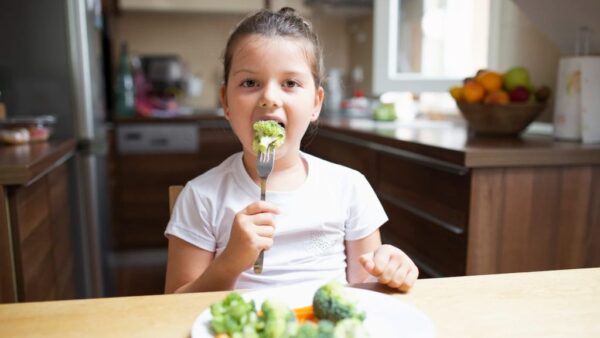
Expert Shares Five Tips to Get Children into Food and Engaged at Mealtimes

While it is common for children to be fussy about the type of food they eat or the idea of sitting down for a family meal, many parents are still concerned about the habits of their children at mealtimes.
With that in mind, experts at Furniture And Choice have teamed up with Theresa McCarthy, expert infant and child nutritionist at Happy Tums, to share the recipe for a harmonious family mealtime.
1. Make mini chefs
By making mealtimes about more than just the sit-down dinner, you can get your children involved in the cooking and preparation. Not only does it keep them occupied and create a family bonding time, but they begin to learn a new skill that will be useful later in life, understanding food and its benefits.
McCarthy adds: “Cook food that your child has grown or has chosen from the supermarket and serve food that your child has helped to make.”
2. Get creative
To stimulate children at mealtimes, be creative with the presentation of meals or the environment in which you enjoy them. The recent trend where parents turn turkey dinosaurs, mash, and veg into a scene from Jurassic Park is a simple way to get children excited about their dinner.
McCarthy says: “Serve food as a buffet style so there are lots of options to choose from and let your child choose what they want. Have mealtimes in a den now and again! Allow your child to make a den in the house and eat with them as a picnic. Make food fun and colourful and with variation!”
3. Try family style
McCarthy explains: “Eat together as a family. Eat the same foods. Chat together, laugh together, tell jokes. Use positive words about the foods, but don’t force the child to eat it.”
Show children that they’re not the only ones who have to eat the food, subtly encouraging them to participate in mealtimes. Serving food from the centre of the table gives kids opportunity to portion for themselves while creating an engaging atmosphere.
4. Avoid pressure
Children are least likely to eat food when they are being forced to. Try putting the food on their plate and let them choose what to eat, ask them to communicate why they don’t want it and if there are any alternatives they would prefer for next time.
McCarthy says: “We eat the same food so they aren’t wondering why their parents are not eating the veg that we want them to eat. We don’t pressure our children to eat at all which should lead to a relaxing mealtime experience.”
5. Turn off tech
McCarthy comments: “Children like to be busy and so we need to keep them occupied during mealtimes and we do this by chatting with them and engaging with them on topics other than the food they are eating. We don’t want them to watch a screen when eating, we all eat together as a family so that includes siblings.”
Allowing kids to fall into the habit of having electronic devices at the table will affect their eating habits and manners at the table. Have a no tech zone for mealtimes and keep them actively involved in conversation to encourage healthy behaviour.
Tom Obbard, Managing Director, at Furniture And Choice commented: “The idea of sitting down and enjoying mealtimes as a family is not always as simple as it may first seem. Children can be challenging and easily distracted when it comes to food and engagement during big family meals.
“It’s perfectly normal for children to struggle with their eating habits, but there are various strategies that parents can implement which will help advance the way they interact with food and at dinner time.”














































